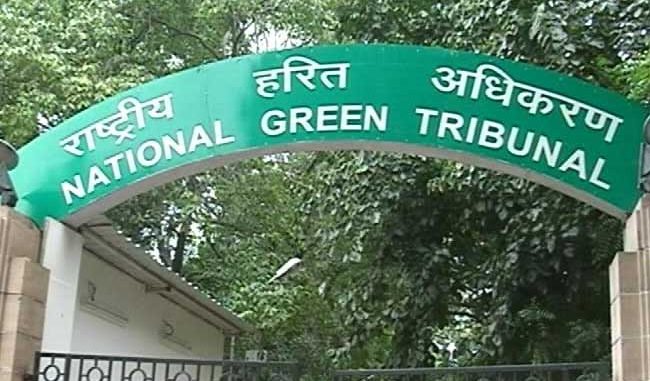
NEW DELHI: At least a dozen lawyers and bureaucrats stand in front of the judges during a morning hearing of the National Green Tribunal (NGT), an environmental court.
“Can you tell us what you can do, instead of telling us what you can’t do to ensure agriculture residue is not burnt?,” Judge Swatanter Kumar, the chairperson of the NGT, asked a senior bureaucrat from the northern state of Punjab.
The hearing on Thursday in front of a bench of four judges was on the issue of the burning of stubble by farmers in Punjab and neighbouring Haryana state, cited as the main cause for the stifling pollution in New Delhi, the capital, as well as its surrounding areas.
Delhi was shrouded in a particularly heavy blanket of smog for nearly two weeks in November. The air quality sank to over 12 times the safe limit.
As the bureaucrat droned on sabout the stubble burning, the judge responded sternly: “Please don’t give us a lecture. Tell us what action you have taken.” The matter was then set for another date.
Over the course of the week, the court – a judicial body led by judges and environmental experts – has held daily hearings on Delhi’s pollution, maintaining pressure on the governments of Punjab, Delhi and Haryana, asking them to draw up fresh plans to improve the situation.
Against this backdrop the NGT is seen as a recourse for anyone who cares about the environment.
The tribunal was set up to quickly dispose of cases related to environmental protection and conservation of forests and other natural resources. It hears all civil cases that are related to environmental issues, fixes compensation and hears appeals against an order or decision of the government related to environmental issues
Bureaucrats are routinely hauled up. In July this year, the NGT even issued arrest warrants for four officials from the railway ministry for missing court appearances in a waste disposal matter.
Court proceedings are closely followed by the Indian media and its orders constantly makeheadlines.
“The NGT has successfully made environment a mainstream subject in India,” said Mr Ritwick Dutta, an environmental lawyer.
“It has issued warrants of arrest holding officers guilty of contempt. It has opened up doors for anybody to approach, steering the environment movement in a particular direction. Some 150 to 200 cases are heard everyday. People know on environmental issues, if you go to NGT some change is possible,” he said.
Since its inception in 2010 till October this year, the NGT has adjudicated on 20,696 cases, seen as remarkable in a country where court proceedings can go on for years. There are 3,024 cases pending before the court.
Some of the court’s major decisions include a fine of Rs 50 million ($1.05m) on a popular spiritual guru, Sri Sri Ravi Shankar’s Art of Living Foundation for organising the World Culture Festival on the banks of the Yamuna and ruining the river’s floodplains. The foundation has vowed to appeal to the Supreme Court.
Cases before the NGT include hotels building extensions without environmental clearances, trees bring felled around the Taj Mahal in Agra, the efficient working of sewage treatment plans along the river Ganges and pollution by thermal coal powered plants. It is also monitoring the building of Amaravati, the proposed new capital city of the southern state of Andhra Pradesh.
“The number of cases filed is a good barometer of measuring the confidence of people,” said senior advocate, Raj Panjwani
Still, critics have accused the NGT of judicial activism.
Last year (2016), former environment minister, Prakash Javadekar, accused the court of over reach after it called for a ban on 10-year-old diesel vehicles in Delhi.
Others believe the court has not done enough on environmental clearances given by the government for major infrastructure projects.
Mr Dutta noted that only two such clearances were quashed from the more than 200 to 300 cases lodged.
The court has also come under criticism after it issued an unusual order – among several others – to stop people protesting or assembling at Jantar Mantar in central Delhi, the only designated area for such activity near the federal parliament and federal offices.
Still many environmentalists and lawyers insist the NGT was necessary in India where laws were regularly flouted. For litigants, it remains the last hope in a country where development mostly outweighs environmental concerns.
“There is no possibility of getting complete solution in the NGT because implementation is with the authorities. But the NGT is like a fast track court. Judgements come fast and hearings take place within days unlike other courts where it takes six months to a year even for cases to be heard,” said Mr Vikrant Tongad of NGO Social Action for Forest & Environment: Safe Green, a litigant.
“We have many hopes with the NGT,” he added.
Source: The Straits Times

Leave a Reply